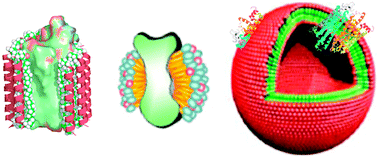Designer peptidesurfactants stabilize diverse functional membrane proteins
Abstract
Multi-spanning integral membrane

* Corresponding authors
a
Center for Biomedical Engineering, Massachusetts Institute of Technology, NE47, 500 Technology Square, Cambridge, USA
E-mail:
sotiris@mit.edu, shuguang@mit.edu
Fax: +1 617-258-5239
Tel: +1 617-324-7612
Multi-spanning integral membrane

 Please wait while we load your content...
Something went wrong. Try again?
Please wait while we load your content...
Something went wrong. Try again?
S. Koutsopoulos, L. Kaiser, H. M. Eriksson and S. Zhang, Chem. Soc. Rev., 2012, 41, 1721 DOI: 10.1039/C1CS15180K
To request permission to reproduce material from this article, please go to the Copyright Clearance Center request page.
If you are an author contributing to an RSC publication, you do not need to request permission provided correct acknowledgement is given.
If you are the author of this article, you do not need to request permission to reproduce figures and diagrams provided correct acknowledgement is given. If you want to reproduce the whole article in a third-party publication (excluding your thesis/dissertation for which permission is not required) please go to the Copyright Clearance Center request page.
Read more about how to correctly acknowledge RSC content.
 Fetching data from CrossRef.
Fetching data from CrossRef.
This may take some time to load.
Loading related content
